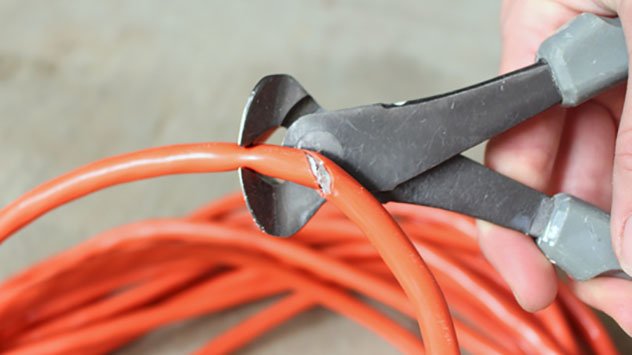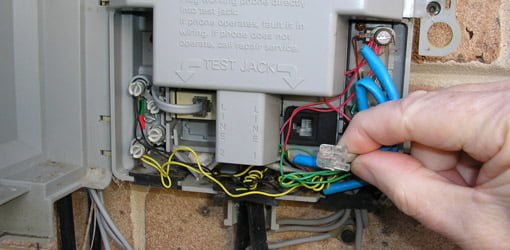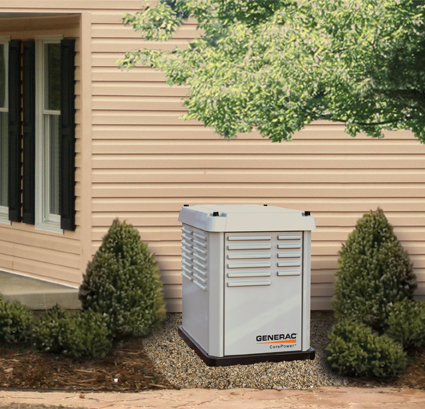A 20-amp circuit can safely support up to 10 outlets, based on a standard load of 1.5 amps per outlet and the National Electrical Code’s (NEC) 80% load rule. That means you can draw up to 1,920 watts on a 120-volt system before risking an overload or tripped breaker.
Why does this matter? Overloading a circuit isn’t just inconvenient — it’s a fire hazard. If you’re running too many devices on the same line, you could be damaging your wiring or pushing your breaker past its limits.
Whether you’re planning a kitchen remodel, upgrading your workshop, or just wondering if it’s safe to plug in that extra appliance, understanding outlet limits is essential for safe and efficient power distribution.
In this guide, we’ll break down how to calculate safe outlet counts, what kind of devices make the biggest impact on circuit load, and when it’s time to upgrade your system. We’ll also walk through the types of outlets to consider and when to bring in a licensed electrician.
How To Calculate Outlet Load on a 20-Amp Circuit
To figure out how many outlets you can safely use, start with the basic formula:
Amps × Volts = Watts
For a 20-amp, 120-volt circuit:
20 × 120 = 2,400 watts total capacity
Apply the 80% rule:
0.8 × 2,400 = 1,920 watts safe operating load
Now divide by the expected load per device. If you’re assuming 1.5 amps per device, or 180 watts each:
1,920 ÷ 180 = 10.67 outlets
That rounds down to 10 outlets.
But keep in mind — this isn’t just about the number of plugs. What you actually connect to those outlets matters more. Ten outlets powering nothing but nightlights? No problem. Ten outlets powering hairdryers and space heaters? You’re headed for trouble.

How Many Outlets Can You Have on a 20-Amp Circuit?
The NEC doesn’t set a hard limit on the number of outlets, but electricians follow a common-sense rule based on load: no more than 10 outlets per 20-amp circuit. That’s assuming each outlet supports a typical load of 1.5 amps, keeping total usage under 80% of the circuit’s capacity — about 1,920 watts on a 120V system.
This 80% rule provides a safety margin to avoid overheating, protect your wiring, and prevent nuisance tripping when devices start up. If you push a 20-amp circuit too close to its 2,400-watt theoretical limit, it won’t take much to tip it over the edge.
When To Upgrade to a Higher-Amp Circuit
If your current circuit keeps tripping, runs warm to the touch, or emits a burning smell, you’ve likely outgrown it. Other red flags include:
- Buzzing or crackling at outlets
- Discoloration around receptacles
- Mild shocks when plugging things in
- Power tools or appliances that won’t start properly
These are all signs your circuit is overloaded or unsafe. If you’re renovating, adding new appliances, or setting up a home office or workshop, upgrading to a dedicated 20- or even 30-amp circuit may be necessary.
Outlet Types To Know Before You Upgrade
If you’re reworking your home’s electrical system or adding outlets to a 20-amp line, it helps to know the options:
- 15-amp outlets: Standard in most homes, suitable for low-load devices like lamps or TVs. They can be installed on 20-amp circuits if there are multiple outlets on the line.
- 20-amp outlets: Have a T-shaped slot and can handle heavier loads. Ideal for microwaves, space heaters, and garage equipment. Must be installed on a 20-amp circuit only.
- GFCI outlets: Required in bathrooms, kitchens, laundry rooms, and outdoors. Protect against shock in wet areas.
- AFCI outlets: Help prevent electrical fires by detecting arc faults. Required in bedrooms and living areas in newer homes.
- Tamper-resistant outlets: Child-safe design required by code in most areas.
- USB outlets: Great for charging phones and tablets without bulky adapters.
- Smart outlets: Allow remote control of appliances and lighting via apps or voice assistants.
- Switched outlets: Let you control power with a wall switch — convenient for lamps or holiday lights.
Final Thoughts: Stick to the 80% Rule and Call a Pro if Needed
A 20-amp circuit can safely power up to 10 standard outlets, as long as you’re staying under the NEC’s recommended 80% load. Just remember — it’s not about the number of outlets, but what you plug into them.
If you’re unsure whether your current setup is safe, or if you’re planning to add high-demand devices, bring in a licensed electrician. They can evaluate your panel, check wiring sizes, and recommend whether a circuit upgrade or new breaker is the smarter choice.
FAQs: 20-Amp Circuit Outlet Limits
What happens if I exceed the outlet limit on a 20-amp circuit?
Too many outlets — or more importantly, too many high-wattage devices — can cause breakers to trip, wires to overheat, or even spark electrical fires. Just because an outlet works doesn’t mean the circuit can handle everything plugged into it. If your breaker trips frequently, smells like burning plastic, or the outlets feel warm, it’s time to reduce the load or call an electrician.
Can I use 14-gauge wire on a 20-amp circuit?
No — 14-gauge wire is not rated for 20 amps and using it violates the NEC. A 20-amp circuit requires 12-gauge wire or larger to safely handle the current. Undersized wiring can overheat and poses a serious fire risk. Always match wire size to circuit amperage.
What’s the difference between 15-amp and 20-amp outlets?
A 15-amp outlet has two vertical slots, while a 20-amp outlet includes a horizontal slot to accommodate 20-amp plugs. 15-amp outlets can be used on 20-amp circuits, but only if there are multiple outlets on the circuit (per NEC rules). For heavy-duty appliances like microwaves or power tools, it’s best to use true 20-amp outlets on a dedicated 20-amp circuit.
When should I upgrade to a higher-amp circuit?
If you’re constantly tripping breakers, smelling burning around outlets, or seeing sparks when plugging things in, it’s time to upgrade. Also consider upgrading if you’re adding power-hungry appliances (like a garage workshop, large freezer, or electric range). A licensed electrician can inspect your panel and recommend whether a dedicated circuit or a panel upgrade is the right move.
Are there special outlets I should consider for safety or convenience?
Yes — several types of outlets go beyond the basic models:
-
GFCI outlets are required in kitchens, bathrooms, and outdoor areas for shock protection.
-
AFCI outlets detect dangerous arc faults and are standard in bedrooms and living spaces.
-
Tamper-resistant outlets are a must in homes with children.
-
Smart outlets let you control devices remotely via smartphone.
-
USB outlets simplify charging without bulky adapters.
Adding the right outlet type can improve safety, usability, and even resale value.
This site receives compensation from the companies featured in this listing, which may impact where and how products appear. This listing doesn’t feature all companies, products, or offers that may be available.









